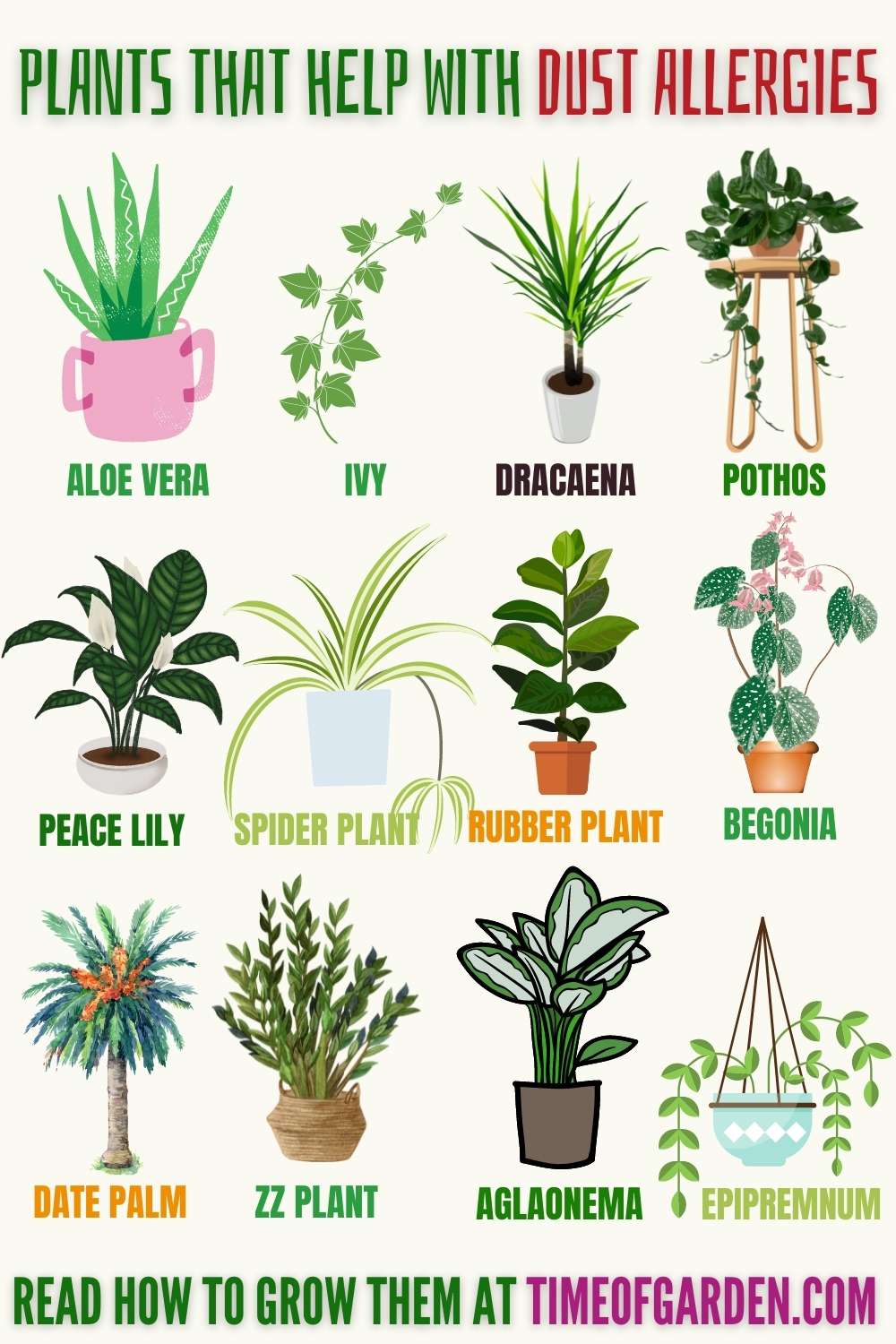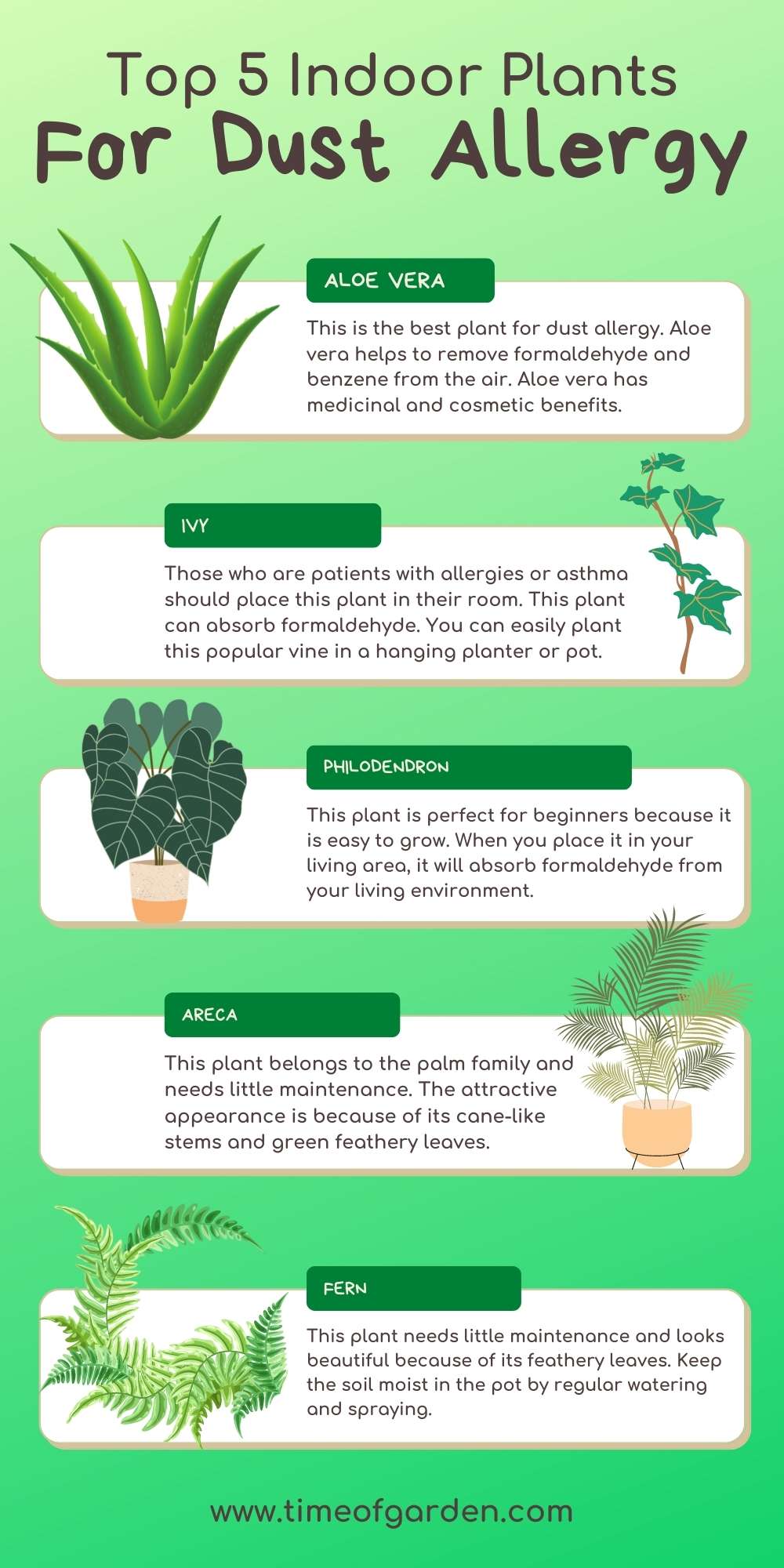Your living environment should be free from these pollutants because you have to spend most of the time of your day in your home. Home should be a safer place for you so make your breathing air clean by adding different plants.
One of the benefits of keeping plants indoors is that they can help with your dust allergies. People have a misconception about plants that they are the reason for many allergies. allergies. But it is not valid, some plants can help you to fight your allergies.
Some plants are best to purify the air in your living area from dust. It is confirmed that some plants have cleansing properties so they can be used to clean the air of your indoor area naturally.

What Are Substances That You Found At Home?
Air pollution is a big problem for our environment. We can’t fight it because human beings are the reason for spreading these pollutants in the atmosphere.
Now we will tell you the important pollutants that are making the environment polluted. Each pollutant has different effects on your body. It can become the reason for different serious diseases such as allergies, oncology, and nervous system disorders.
1- FORMALDEHYDE
This pollutant is everywhere, even in our homes. This is found in insulation, glues, and adhesives. This is also used in pressed wood products such as particle board that is used in furniture, plywood paneling, gas stoves, wrinkle removers, and fire retardants.
The presence of formaldehyde is not good in your environment because this is the reason for allergic reactions.
2- BENZENE
The main cause of this pollutant is smoking and petroleum products that contain benzene. The other sources of benzene are smog, paint, glue, detergents, paint strippers, and rubber.
If you live in an industrial area then you will face the problem of smog with a high quantity of benzene which is not good for your health.
According to WHO, houses that are attached to garages have a high level of benzene. Benzene is a well-known cause of cancer and other health problems.
3- TRICHLOROETHYLENE
The main source of this pollutant is Industrial solvents that are used to remove grease and building materials. This is an organic compound and it is also found in the water.
The other sources of this harmful pollutant are spot removal fluids, rug cleaners, adhesives, typewriter correction fluid, and paint remover. This pollutant can damage your central nervous system and cause fatigue, cancer, and blurred vision.
4- XYLENE AND TOLUENE
Xylene and toluene can disturb your health by touching, swallowing, and inhalation. The main sources of these pollutants are glues, adhesives, fingernail polish, paints, lacquer, paint thinner, and plastic cement.
These pollutants can affect your nervous system, kidneys, and gastrointestinal system.
5- AMMONIA
The main sources of ammonia are animal feces, fertilizers, cleaners, fuel, and wood fires. Ammonia can cause nausea and headaches. Patients with asthma and different allergies are sensitive to ammonia.

Best Indoor Plants For Dust Allergy
You have to spend most of the day in your apartment or office. Different types of harmful substances can affect your health. Plants that have shiny, waxy, and large foliage can absorb dust from the air.
Such indoor plants can absorb dust and make the air clean. You should use plants to make the air fresher. Many plants can be used for this purpose.
Different plants can be used for reducing the amount of dust in the air. Plants can act as a natural filter and deactivate toxic compounds.
The other benefit of plants is that they help to humidify your living area because of the evaporation of water from their leaves. When you place beautiful and colorful plants in your room then they will soothe your eyes and make your mood fresh.
If you want the plants to effectively purify the year of your living area then you should increase the number of plants. We can’t say how many parts of plants you need to place per square meter but it is true that if you place more plants then more oxygen will be released into your room.
1- ALOE VERA
This is the best plant for dust allergy. This plant needs little maintenance so a beginner can handle it easily. This plant belongs to the succulent family that’s why it needs less water.
Aloe vera helps to remove formaldehyde and benzene from the air. Aloe vera has medicinal and cosmetic benefits. Its gel helps in the healing of burns and cuts. For nourishment and moisturizing your facial skin, aloe vera can be used in different remedies.
2- IVY
This plant can absorb formaldehyde. You can easily plant this popular vine in a hanging planter or pot. The shady area is perfect for growing ivy plants.
Those who are patients with allergies or asthma should place this plant in their room. But keep in your mind the leaves of this plant are very poisonous. If you have kids then in that case you should be careful.
3- DRACAENA
Xylene, formaldehyde, and trichloroethylene are not good for your health. These harmful pollutants are found in paints, solvents, and sealants. If you buy dracaena then it will help to purify the air from these harmful compounds.
The height of this plant can be reached up to 2 m. But if you plant it in a smaller pot then it will not grow larger. Dracaena prefers to grow in bright and diffused light.
It is better to place your pot near a sunny window where it gets the required amount of sunlight. You can also grow this plant in small pots on the windowsill.
There are different varieties found that have colorful leaves. It is recommended that you should feed dracaena plants regularly from spring to autumn. As your plant grows you have to transplant it into a larger pot so the roots of the plant will get space and grow healthy.
4- POTHOS
Pothos is a common indoor plant and it has shiny foliage that can easily trap dust. In the presence of pothos, the air can be cleaned from many harmful toxins.
Benzene, formaldehyde, toluene, xylene, and carbon monoxide are harmful pollutants and pothos can help you to make your air cleaner.
5- PEACE LILY
Another beautiful and attractive indoor plant that is included in our list is the peace lily. It can also reduce the number of toxins in your environment. In the presence of this indoor plant, you can control the number of harmful pollutants in your living area.
The other advantage of peace lily plants is that they can easily absorb mold spores and acetone vapors due to their shiny foliage.
In the presence of these toxin materials, you can become a patient with headaches, slurred speech, lack of coordination, and low blood pressure. If you use a large pot for growing a peace lily then it will become the center of attraction in your living room.
6- SPIDER PLANT
We recommend this plant because this is very effective in removing pollutants in your living environment. If you place spider plants in your living area then they can easily clean 95% of toxins such as formaldehyde, carbon monoxide, toluene, nitrogen dioxide, and xylene from the air.
In this way, the air in your surroundings will be more fresh and clean. When you breathe in fresh and clean air then it will bring positive change to your health.
7- RUBBER PLANT
Rubber plant has large and waxy foliage that looks very attractive when you place it in your drawing room or living room. This plant is included in the list of those flowers that can remove dust from the air.
Rubber plants can absorb pollutants from the air very effectively. You can use this plant for dual purposes. First, you can clean the air of your living area, and second, use it as decorative plants.
It is suggested that you should mist the plant once a day because the dust sticks to its foliage. It will help to improve the efficiency of plants to absorb more dust.
8- BEGONIA
Begonia is found in different varieties that produce red, pink, or white flowers that are arranged in clusters. But this plant needs sunlight to thrive well and needs regular water and feed.
If you take care of this plant then you will not only get beautiful flowers but it helps to reduce the number of toxin materials. Toluene and benzene filter out from the air, in the presence of the begonia plant.
9- DATE PALM
Date palm helps to make air healthier after removing formaldehyde, styrene, toluene, and xylene. These harmful materials cause sick house syndrome. Light, temperature, and humidity all are important to improve purification capability.
10- ZZ PLANT
The beautiful dark green leaves of the ZZ plant help in cleaning the air. This is a low-maintenance plant and helps to absorb harmful toxins from the air. This plant is easily adjusted in small pots and looks stunning.
Shiny and waxy leaves trap the dust and particulate matter from the air. Your bedroom is the best place for keeping this attractive plant. The foliage of the plant must be misted regularly for better results.
11- AGLAONEMA
This is the best indoor plant that is not very demanding. The leaves of the plants have bright patterns and spots. The suitable temperature for growing aglaonema is 20 to 24 degrees.
Keep the soil moist in summer because on heart days soil dries out very quickly. It is better to spray the leaves regularly for better results.
Keep in your mind this plant contains toxic juice. If accidentally this juice enters your body then it can affect your nervous system and heart.
12- EPIPREMNUM
Another beautiful plant that cleans the air from benzene, formaldehyde, and carbon monoxide. It looks great when you add it to the interior. This is a vining plant that can easily climb along shelves. You can grow it in a hanging basket and it does not need too much moisture.
13- FERN
This plant needs little maintenance and looks beautiful because of its feathery leaves. Keep the soil moist in the pot by regular watering and spraying.
If the roots of the plant will not get water on time then the leaves start falling. Keep in your mind this plant doesn’t like transplanting. It looks great when you grow it in an attractive hanging basket from the ceiling.
14- ARECA
This plant belongs to the palm family and needs little maintenance. The attractive appearance is because of its cane-like stems and green feathery leaves.
A bright place is perfect for placing areca’s pots. A sunny window is a perfect location for the areca plant when you grow it inside your home. Direct sunlight is not suitable and the ideal temperature is between 18 to 24 degrees centigrade.
15- PHILODENDRON
This plant is perfect for beginners because it is easy to grow. When you place it in your living area, it will absorb formaldehyde from your living environment.
Direct sunlight is not suitable for this plant so you should not expose it to bright sunlight. This plant can easily tolerate partial shade. The ideal temperature for growing philodendron is between 18 to 24 degrees Centigrade.
If you have pets and small kids then you should not grow it in your apartment or house because it produces substances that can irritate the mucous membrane. The substance can become the reason for diarrhea, abdominal pain, and vomiting.
